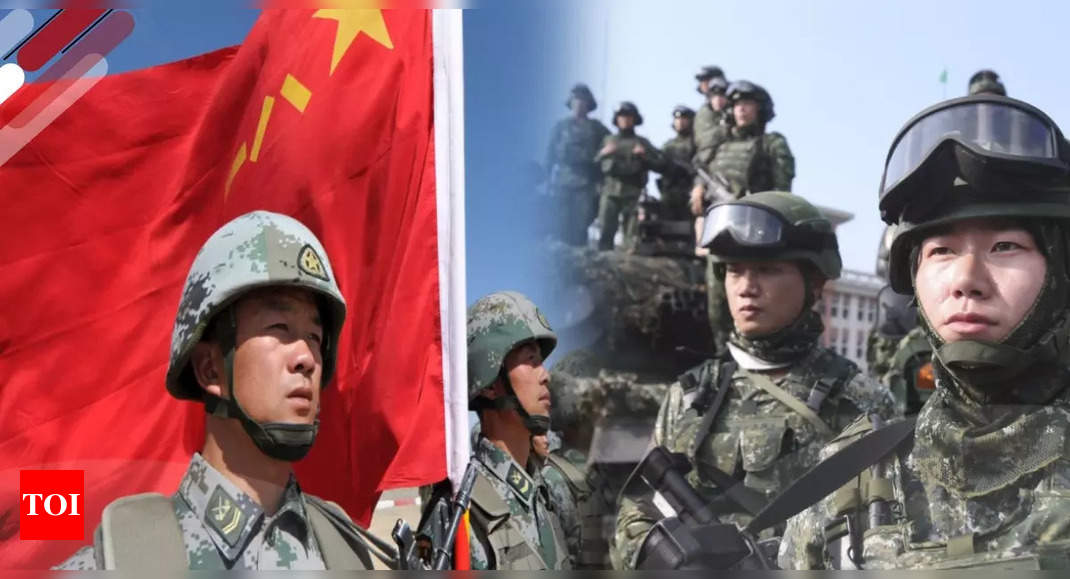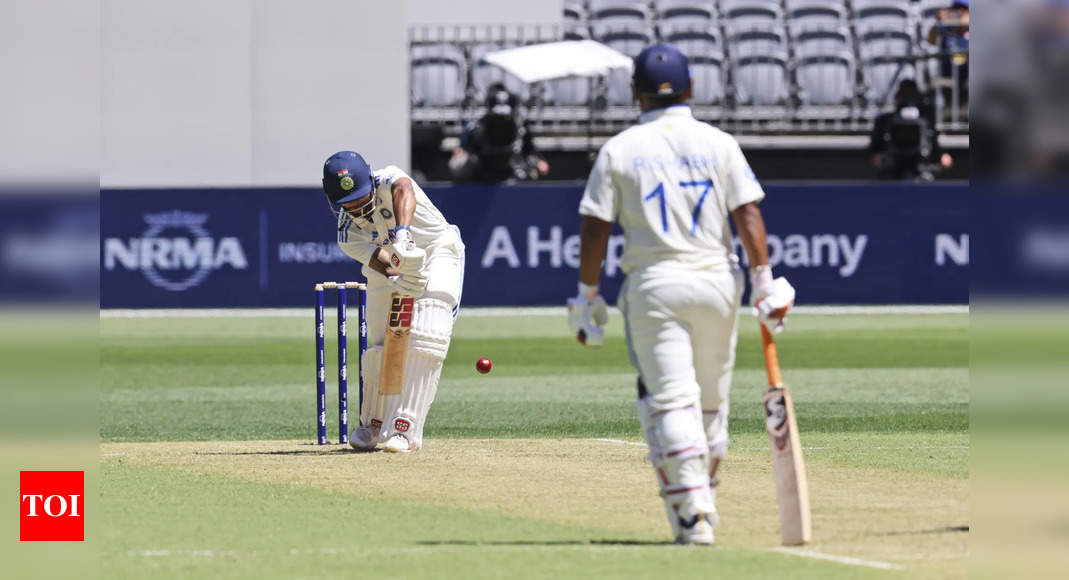
The Chinese Coast Guard is now “constantly” patrolling east of the median line in the Taiwan strait, said Chen, referring to the US-drawn boundary that had for decades served as an unofficial barrier between the two sides.
“Fishing boats probably won’t go near Kinmen and the Chinese coast in the near future,” Chen said. “Everyone is concerned about being detained now.”
The fear among fishermen suggests that China is turning to new tactics to pressure the democratically run, US-backed archipelago that Beijing has pledged to bring under its control someday. Mostly using its Coast Guard, Beijing seems to be asserting itself in new ways around Taiwan’s offshore outposts. Many of them are far from Taiwan’s main island and just a few kilometers from China, presenting challenges with supplies and providing services like the Internet.
The changes coincide with China squeezing President Lai Ching-te since he took office in May. To show its displeasure with a figure it suspects is pursuing independence, Beijing has held major military drills around Taiwan’s main island, peeled off a diplomatic ally and expanded a law it says is aimed at punishing “separatists.”
In the latest incident involving fishermen, the Chinese Coast Guard detained a Taiwanese a boat and its crew near Kinmen, the most populated of Taipei’s offshore outposts. The vessel and the two Taiwanese and three Indonesians aboard were taken to a Chinese port, a move mainland authorities said was necessary because they’d violated a summer fishing ban.
In recent months, China has also boarded a Taiwanese tourist craft near Kinmen to check documents, surprising passengers who feared they’d be taken to the mainland. That rare move escalated a spat over an incident in which two Chinese fishermen died while fleeing from Taiwan’s Coast Guard.
Beijing has also repeatedly sent its Coast Guard vessels zipping closer to Kinmen than it ever did in the past. And its Coast Guard carried out maneuvers around two other islands while the People’s Liberation Army held major drills just after Lai took office — the first time that has occurred.
“China has been increasingly using Taiwan’s outlying islands to step up its pressure on Taiwan,” said Chen Yu-jie, an assistant research professor at Academia Sinica in Taipei.
“Incidents like the boat seizure earlier this month were not individual episodes,” she added, saying they must be seen “within the wider context of legal warfare,” referring to law-based tactics Beijing uses to undermine Taipei.
China’s Defense Ministry didn’t respond to a request for comment. The nation’s Coast Guard doesn’t provide contact information to the public.
When asked about China’s activities around the offshore outposts, a spokesperson for Taipei’s Coast Guard said it “had deliberately intruded into the waters of Taiwan’s outlying islands more than 30 times starting this year with the clear intention of harassment.”
Taiwan would monitor the situation and ensure the safety of its fishermen, the spokesperson said.
A key date in the new arena of tensions is February 14. That’s when the Taiwanese Coast Guard said it chased a small Chinese vessel after it fled an inspection. In the pursuit, the smaller vessel capsized. Two Chinese fishermen were rescued but two others died.
Taiwan expressed regret over the incident but said the actions taken by its Coast Guard were lawful and proper. It has also said the two sides would hold talks in Kinmen over the episode on Wednesday.
China condemned Taipei for the fatalities. Shortly afterward, the Chinese Coast Guard announced it would start making routine patrols around Kinmen.
Also in February, Taiwan’s Coast Guard began noting more Chinese vessels traveling through Kinmen’s “restricted waters.” Taipei started marked those areas around its offshore outposts in 1992, and China mostly stayed out in the ensuing decades.
But Taiwan counted five incursions into Kinmen’s “restricted waters” in February and a similar number in each of the next two months. Then the number jumped to 12 in May — Lai’s first month leading the archipelago of 23 million people.
On May 23, the PLA underscored China’s disdain for Lai by holding its most expansive exercises in a year around Taiwan. Those drills were different in one key regard from the ones the PLA held after Lai’s predecessor, Tsai Ing-wen, met senior US lawmakers. For the first time, the Chinese Coast Guard traveled into the “restricted waters” of two other Taiwanese outposts, Dongyin and Wuqiu, during major military exercises.
Shortly afterward, a social media account run by state broadcaster China Central Television said the forays closer to the two islets were a sign that Beijing had expanded its new “Kinmen model,” referring to the regular patrols. It also said that the PLA and Chinese Coast Guard had coordinated their movements during the military drills.
China’s stepped-up activity in Taiwanese “restricted waters” echoes the way it worked to diminish the importance of the median line in the strait. The US drew that boundary in 1954 during a period of cross-strait tensions, and for decades the Chinese military largely stayed on its side.
Then in summer 2022, Chinese warplanes started breaching the line regularly. The tactic establishes a closer military presence to Taiwan and reduces the amount of time that its armed forces have to react to any attack. Earlier this month, the PLA sent a record number of warplanes across the median line, flights that came just as Lai was mulling a stop in the US as part of a trip to diplomatically allied nations.
China’s new activity around the Taiwanese islets is also reminiscent of its increasingly aggressive interactions with the Philippines. Manila and Beijing have been locked in testy confrontations around a shoal in the South China Sea where the Philippines has tried to resupply a beached World War II-era ship that serves as an outpost.
Last month, a Philippine sailor lost a thumb in a clash, and the US later said China’s actions had threatened regional peace. Manila and Beijing recently reached a “provisional” deal to try to calm tensions around the shoal, though there’s signs they disagree on the pact’s specific contents.
The government in Taipei has said little publicly about the detained fishing boat and the Taiwanese crew members still in China, likely to avoid escalating the matter and to create negotiating room. The archipelago’s spy chief, Tsai Ming-yen, said China may have been politically motivated to stop the fishing boat and its crew. He also warned Taiwanese fishermen to be vigilant.
China’s detention of the vessel may also be a subtle test of the US, said Chen Fang-yu, an assistant professor in the Department of Political Science at Soochow University in Taipei.
While Washington backs Taipei militarily, economically and politically, its attitude to most of the offshore outposts is vague. President Joe Biden has repeatedly said the US would defend Taiwan from a Chinese invasion but it is unclear how the US would respond to a crisis involving any of the more than 130 islands that make up the Taiwanese archipelago.
For now, Chen, the academic at Soochow University, said that previous understandings of the boundaries and overlapping waters of China and Taiwan no longer exist. “It’s likely that China will increasingly harass fishing boats and sightseeing boats to test Taiwan’s response,” he said.









